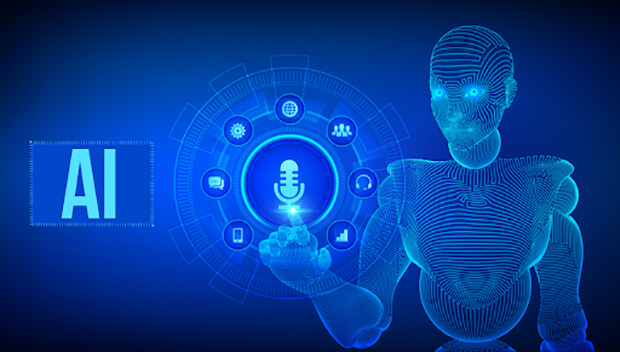Unveiling the Future: The Role of AI in Italian Transcription
In the ever-evolving landscape of transcription services, the integration of Artificial Intelligence (AI) has emerged as a transformative force, reshaping the way we convert spoken language into written text. This holds particularly true in the context of Italian transcription, where the nuances of the language meet the efficiency of AI algorithms. In this exploration, we delve into the dynamic role of AI in Italian transcription, unraveling the impact, benefits, and considerations that come with this technological evolution.

Initiating the Transformation: Transcribe Italian Video to Text
At the heart of this discussion lies the pivotal process of transcribing Italian video to text. Traditionally a labor-intensive task, transcription involves converting spoken words into written form. With the advent of AI, this process has undergone a revolutionary shift, introducing efficiency, speed, and scalability into the realm of transcription services.
Why AI in Italian Transcription?
The integration of AI in Italian transcription is not merely a technological trend; it's a strategic move to address the complexities of the Italian language and enhance the overall transcription experience. Here are key reasons why AI has become a driving force in Italian transcription:
1. Language Nuances
Italian, renowned for its rich cultural and linguistic heritage, poses unique challenges for transcription. Dialects, regional variations, and intricate syntax demand a nuanced understanding that traditional transcription methods may struggle to achieve. AI, with its capacity for machine learning and pattern recognition, adapts to these nuances, ensuring a more accurate and contextually relevant transcription.
2. Efficiency and Speed
AI-powered transcription services operate at unprecedented speeds. The ability to process large volumes of Italian audio and video content swiftly enhances efficiency, making AI an ideal choice for projects with tight deadlines or extensive datasets. This speed is particularly beneficial in industries where timely information is crucial.
3. Scalability
The scalability of AI-driven transcription services is a game-changer. Whether transcribing a short video clip or hours of conference proceedings, AI effortlessly scales to meet the demands of the project. This adaptability is especially advantageous for businesses, researchers, and content creators with varying transcription needs.
4. Continuous Learning
One of the key strengths of AI is its capacity for continuous learning. As it encounters new linguistic patterns, accents, and vocabulary in Italian, the system adapts and refines its transcription capabilities. This ongoing learning process ensures that AI transcription services evolve, becoming increasingly accurate and attuned to the intricacies of the language.
5. Cost-Effectiveness
AI introduces cost-effectiveness into the realm of transcription. Automated processes reduce the need for extensive human intervention, translating into lower operational costs. This cost efficiency, coupled with the speed of AI transcription, makes it an attractive option for projects with budget constraints.
Considerations in AI-Powered Italian Transcription
While the benefits of AI in Italian transcription are evident, it's essential to navigate potential considerations to ensure optimal outcomes. Here are key factors to bear in mind when leveraging AI for Italian transcription:
1. Accuracy Checks
Despite advancements, AI transcription may not always achieve 100% accuracy. Regular checks and revisions by human transcribers are crucial to maintain precision, especially in projects where accuracy is paramount. This hybrid approach, combining AI efficiency with human oversight, strikes a balance between speed and precision.
2. Contextual Understanding
AI, while adept at recognizing patterns, may lack the nuanced contextual understanding that human transcribers possess. In instances where context is critical, such as capturing subtle nuances in tone or deciphering complex subject matter, human intervention becomes invaluable. Understanding the scope of the project is essential to determine the appropriate blend of AI and human involvement.
3. Data Security
As with any technology, data security is a primary concern. When transcribing sensitive content, whether in legal, medical, or corporate settings, ensuring robust security measures is non-negotiable. Choosing AI transcription services that prioritize data encryption, compliance with regulations, and stringent security protocols is essential for safeguarding confidential information.
4. Customization Needs
Certain projects may require specific customization, such as adherence to industry-specific terminology or formatting guidelines. While AI offers flexibility, understanding the extent to which the system can be customized is crucial. Projects with highly specialized requirements may benefit from a hybrid approach that combines AI efficiency with human adaptability.
The Future of Italian Transcription: A Synergy of AI and Human Expertise
In conclusion, the integration of AI into Italian transcription marks a transformative chapter in the evolution of language services. As technology continues to advance, the synergy between AI efficiency and human expertise emerges as the key to unlocking the full potential of transcription services.
Content creators, businesses, and researchers navigating the realm of Italian transcription find themselves at the intersection of tradition and innovation. By embracing the efficiency of AI while recognizing the irreplaceable value of human understanding, the future of Italian transcription becomes a harmonious blend of technological prowess and linguistic finesse. As we embark on this dynamic journey, the role of AI in Italian transcription stands as a testament to the limitless possibilities that arise when technology and language converge.
Copyright © . All Rights Reserved